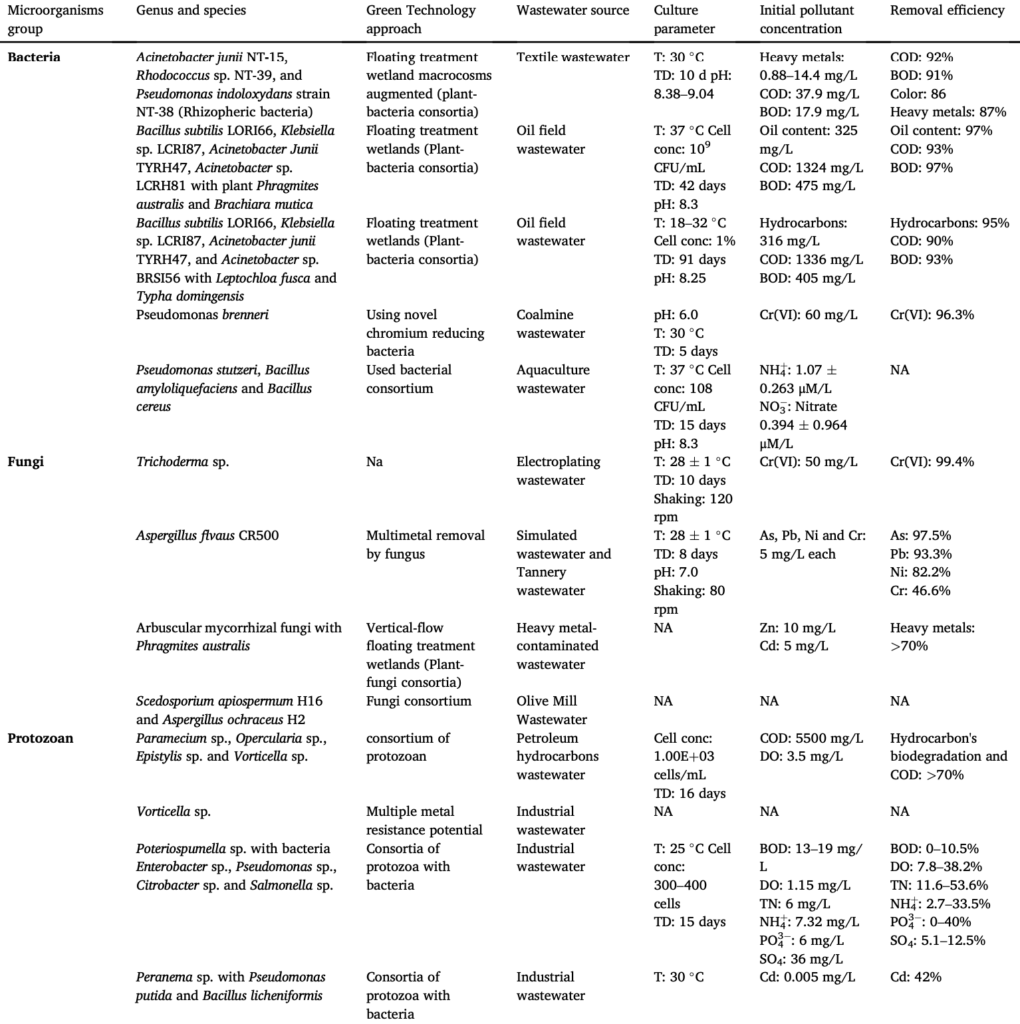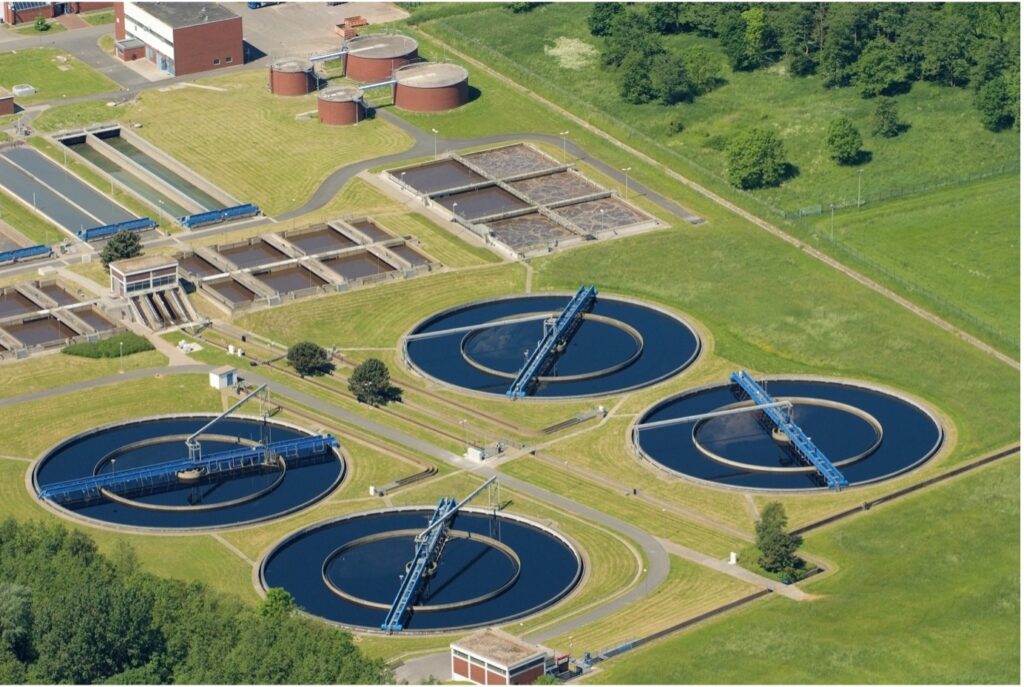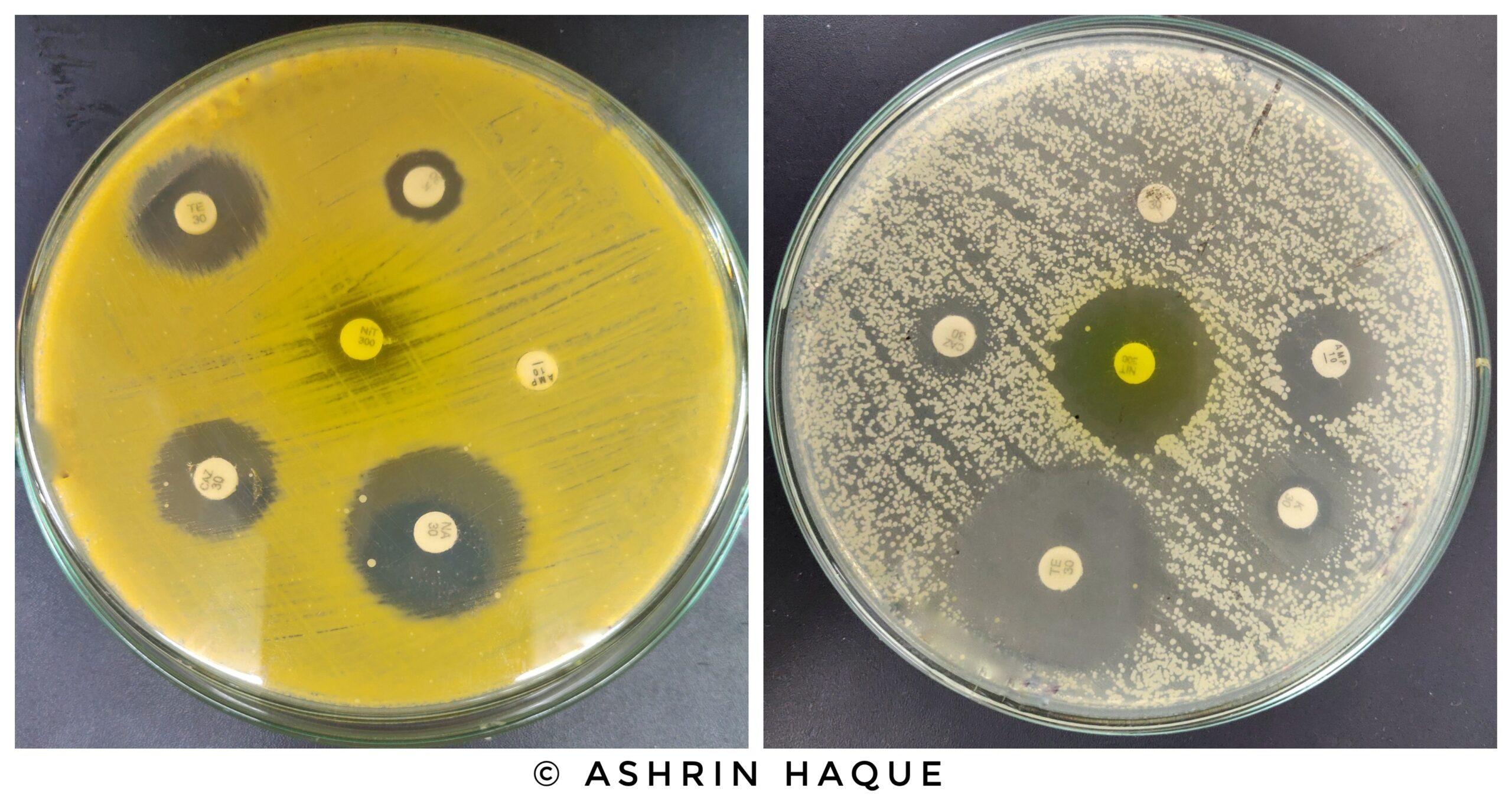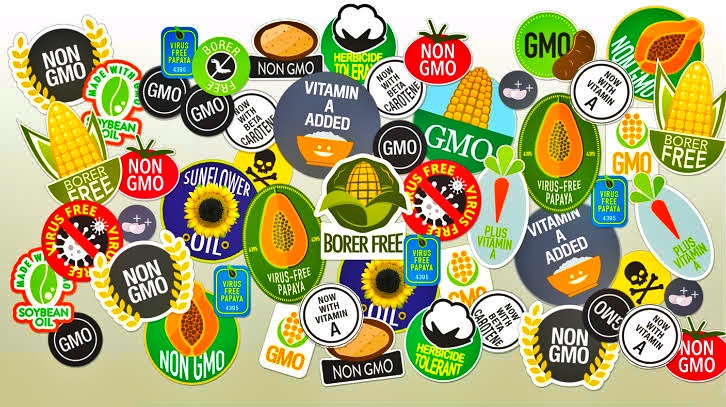Introduction
Water is the most essential and crucial factor in the earth to sustain life. Though 71% of the earth’s surface is covered by water, only 2.5% of it is consumable and the survival of the world’s ecosystem is dependent on it [1][2]. Freshwater bodies are daily polluting with serious contamination such as organic/inorganic compounds, crude oils, carcinogens, heavy metals, etc., only because of rapid urbanization and industrialization [3]. Water-borne diseases are increasing and there will be a global scarcity of potable water as it has been estimated that the world population will double in the next two decades [1]. In this scenario, the bioremediation of wastewater has proven to be an effective and efficient strategy to solve the freshwater shortage and save the world from the harmful effects of wastewater. Bioremediation of wastewater is a sustainable and bio-inspired approach to environmental cleanup in this case water [3][4]. This article aims to give clear ideas about wastewater bioremediation strategy and increase the knowledge about it so that optimum utilization of the process can be ensured.

Figure 1: Bioremediation of wastewater (D. Singh et al.)
Research and Applications
Bioremediation of wastewater is considered an “Advance Green Technology” [1]. The bioremediation process was invented by M. Robinson and the process uses living microorganisms (Figure1) such as microalgae, bacteria, cyanobacteria, fungus, protozoa, etc. to remediate water [3]. Wastewater contains a high concentration of Carbon, Nitrogen, and Phosphorus that ensure the survival of that microorganism. Microorganisms utilize pollutants as an energy source, break down pollutants, and convert them into less toxic forms [1][5].
- Organic waste + O2 (Aerobes) → CO2 + H2O + Energy
- Organic waste + NO3 (Anaerobes) → CO2 + N2 + Energy
- Organic waste + SO2-4 (Anaerobes) → CO2 + H2S+ Energy
Microorganisms are successfully employed for the degradation of organic waste present in wastewater, but recent research shows that the development of consortiums between microorganisms with plant systems (Figure 2) can degrade the polymeric pollutant into monomer forms and use it as a nutrient source [1][6][7]. Recently, the use of genetic engineering shows success to remediate heavy metals, hydrocarbons, carcinogenic compounds, etc., and fungi, microalgae, and protozoa are proven as the most successful bioremediation agents [1][6][7].

Figure 2: Recently introduced wastewater bioremediation process (D. Singh et al)
Based on recent research, scientists identified some microorganisms and their ability to remediate pollutant present in the wastewater of different locations [1]. The information is given in the Table:1

Table 1: Microorganisms and their efficiency for wastewater treatment (D. Singh et al)
Interest in Wastewater Bioremediation
Industries are the main producer’s wastewater. In developed countries, a maximum number of industries have their water treatment system, and before discharge, all the wastewater goes through a treatment process such as physical treatment, chemical treatment, or biotechnological/biological treatment named bioremediation [8]. Physical and chemical treatment methods are relatively very expensive, and the chemical used for these processes also can be a reason for environmental pollution [1][8]. So, as the bioremediation process is a sustainable and bio-inspired approach to environmental cleanup, in recent years this became an attractive alternative to industries and industries are shifting to biological wastewater remediation processes [8]. Even developed countries such as Germany, Russia, France, Colombia, the USA, etc. have Sewage treatment plants (STPs). They mainly depend on the biological process of bioremediation to remove harmful contaminants from wastewater. Bangladesh has the “Hatirjheel Restoration Project” that mainly use a chemical and biological process to treat wastewater [9]. In the project, biosparging is used as a bioremediation method that injects air under pressure below the water body to enhance oxygen concentration so that the naturally occurring bacteria can easily degrade pollutants present in wastewater [9].

Figure 3: Sewage treatment plant in Cuxhaven, Germany
Source: https://images.app.goo.gl/9SJ35EHdKUVvYTa99
Discoveries of Wastewater Bioremediation
Two methods of bioremediation are already used to treat wastewater. The in-Site is a more suitable method that involves the treatment of wastewater in the contaminated site where physical removal is required to ex-situ but that is difficult for wastewater [1]. Application phytoextraction and Phytostabilization show successful results in wastewater treatment where the plant uptake contamination from water and passes them to upper parts [8]. Sunflower (Helianthus annuus), and Chinese Brake fern (Pteris vittata) are effectively used to remove Arsenic from contaminated water [8]. Willow is a plant that has a high transport capacity for heavy metals from root to shoot used for phytoextractors of cadmium (Cd), zinc (Zn), and copper (Cu). Besides all this Indian Mustard (Brassica juncea), Hemp Dogbane (Apocynum cannabinum), and Ragweed (Ambrosia artemisiifolia) are commonly used for lead remediation [8]. Algal blooms can grow in wastewater and are used to remove pesticides from water bodies. Based on modern biotechnology, genetic engineers produced genetically engineered microorganisms such as Deinococcus radiodurans that can be absorbed mercury and aromatic hydrocarbons from oil spills area [8].
Advantages
The bioremediation process is the most sustainable and bio-inspired approach to environmental cleanup. The bioremediation process of wastewater use naturally available resources to treat wastewater [1][2]. The treatment products are commonly harmless. All the strategies are sustainable, eco-friendly, efficient, cost-effective, and have socioeconomic and environmental benefits. Bioremediation requires less labor and regulations compared to other conventional methods that are used for the clean-up of toxic hazards [8]. The process of bioremediation eliminate pollutant or make them less toxic. The products of wastewater bioremediation do not create further environmental issues which make the remediation process sustainable.
Limitations
Bioremediation has some limitations and to overcome all that limitations research and development are going on in this field. Wastewater contains both organic and inorganic waste, but the bioremediation process is only applicable to biodegradable materials and cannot be applied as the generalized treatment method [8]. So, not all pollutants will be eliminated. Microorganism communities used in bioremediation are more site-specific and to maintain the optimum environment, the overall cost can be increased[1][8]. Again, the use of genetically modified organisms (GMOs) requires species biosafety approval to use outside laboratories, and the legal process of getting approval takes a lot of time and complex process, which effectively slows down the development process [11]. The main concern is that without GMOs, wastewater cannot be efficiently biodegraded because the natural process is too slow[11] .
Prospects
Though bioremediation of wastewater has a few limitations, research is ongoing to overcome all the limitations and make it an effective tool to save the world from the negative impact of wastewater [10]. Scientists are working on the Genetic engineering of the microorganism to enhance the efficacy of the bioremediation process[10]. Soon, genetic engineering and gene cloning technology will enable scientists to make the bioremediation process a universal waste management system [7][8]. The use of different bioremediating agents such as plants, nematodes, bacteria, fungi, and microalgae and further involvement of modern technology including nanoscience as well as biotechnology will be helpful to develop new ways to genetically study and engineer the microorganism based on specific needs [8][10].
Conclusion
To conclude, wastewater bioremediation is the best possible sustainable and bio-inspired approach to environmental cleanup for this instance, water, and saving the world from the scarcity of consumable water. The water remediation strategy is highly applicable to developing countries like Bangladesh where the pollution rate is higher, but the budget is limited for water treatment. To ensure the best possible outcome research on wastewater bioremediation is mandatory and we need to find out suitable techniques to remove all the pollutants from water bodies. Bioremediation can open a new door to a pollution-free environment.
References:
1. Singh, D., Goswami, R. K., Agrawal, K., Chaturvedi, V., & Verma, P. (2022). Bio-inspired remediation of wastewater: A contemporary approach for environmental clean-up. Current Research in Green and Sustainable Chemistry, 100261.
2. Shahat, A., Awual, M. R., Khaleque, M. A., Alam, M. Z., Naushad, M., & Chowdhury, A. S. (2015). Large-pore diameter nano-adsorbent and its application for rapid lead (II) detection and removal from aqueous media. Chemical Engineering Journal, 273, 286-295.
3. Ojha, N., Karn, R., Abbas, S., & Bhugra, S. (2021, June). Bioremediation of Industrial Wastewater: A Review. In IOP Conference Series: Earth and Environmental Science(Vol. 796, No. 1, p. 012012). IOP Publishing.
4. Goswami, R. K., Mehariya, S., Verma, P., Lavecchia, R., & Zuorro, A. (2021). Microalgae-based biorefineries for sustainable resource recovery from wastewater. Journal of Water Process Engineering, 40, 101747.
5. Mohsenpour, S. F., Hennige, S., Willoughby, N., Adeloye, A., & Gutierrez, T. (2021). Integrating micro-algae into wastewater treatment: A review. Science of the Total Environment, 752, 142168.
6. Goswami, R. K., Agrawal, K., Mehariya, S., & Verma, P. (2021). Current perspective on wastewater treatment using photobioreactor for Tetraselmis sp.: an emerging and foreseeable sustainable approach. Environmental Science and Pollution Research, 1-33.
7. Goswami, R. K., Agrawal, K., Shah, M. P., & Verma, P. (2022). Bioremediation of heavy metals from wastewater: a current perspective on microalgae-based future. Letters in Applied Microbiology, 75(4), 701-717.
8. Kharayat, Y. (2012). Distillery wastewater: bioremediation approaches. Journal of Integrative Environmental Sciences, 9(2), 69-91.
9. Sohail-Us-Samad, M. (2009). Evaluation of water quality restoration of Hatirjheel.
10. Singh, S., Kumar, V., Datta, S., Dhanjal, D. S., Sharma, K., Samuel, J., & Singh, J. (2020). Current advancement and future prospect of biosorbents for bioremediation. Science of the Total Environment, 709, 135895.
11. Sharma, I. (2020). Bioremediation techniques for the polluted environment: concept, advantages, limitations, and prospects. In Trace Metals in the Environment-New Approaches and Recent Advances. IntechOpen.
If you like this article, you can go through our other top articles
- BIOREMEDIATION: HOW IT WORKS – https://learnlifescience.com/bioremediation-how-it-works/
- DNA Sequencing Methods – https://learnlifescience.com/dna-sequencing-methods/
- Biosensors as a Disease Diagnostic Tool: A Comprehensive Review – https://learnlifescience.com/biosensors-as-a-disease-diagnostic-tool-a-comprehensive-review/
- BIOFILM AND ITS ROLE IN BIOREMEDIATION – https://learnlifescience.com/biofilm-and-its-role-in-bioremediation/
“Since the article has been written to reflect the actual views and capabilities of the author(s), they are not revised for content and only lightly edited to be confirmed with the Learn life sciences style guidelines”









